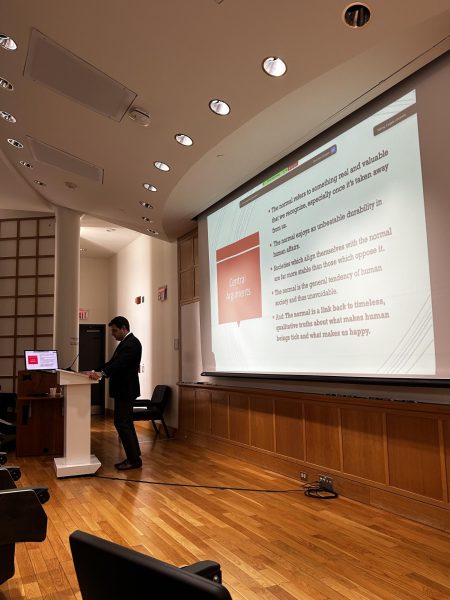Spring Cleaning
This year during Spring Break, 30 Colgate students volunteered their time on two trips offered through the Center for Outreach, Volunteerism and Education (COVE).
The first of these charitable endeavors took 16 student volunteers and two staff members to New Orleans, where they assisted in Hurricane Katrina relief efforts.
The COVE’s two previous hurricane relief trips had concentrated efforts on rural Louisiana, but the seemingly more rapid recovery rate of rural areas as compared to that of urban areas prompted the decision to shift their focus to the city of New Orleans.
“I had this impression that we would get to New Orleans and there would be so many people already helping out that there wouldn’t be much for us to do,” sophomore Erin Bergman said. “In actuality, it was just the opposite. Despite the large number of volunteers, many parts of the city still looked like the hurricane had happened yesterday.”
Director of Community Outreach Marnie Terhune spoke about the current situation in the region.
“Some parts with minimum damage have been repopulated, but there are spots still without power and with no running water, sewers or traffic lights – no infrastructure, basically,” she said.
From Friday, March 10 to Wednesday, March 15, the group worked on gutting two houses located in the Gentilly area, which had sustained extensive water damage when two levees broke. This entailed the removal of any material that could potentially foster mold, including drywall, plaster, ceiling, carpeting, floorboards and furniture – an enormous task given the sheer number of homes.
“Up to this point, very little has been done in terms of recovery,” staff member Julie Dudrick said. “The homes that we worked on were some of the first to begin the recovery process, but the homeowners don’t expect to start actual rebuilding for at least a year.”
Volunteers were housed in and worked through the Aurora United Methodist Church, which plans to be in operation for the next decade trying to facilitate rebuilding of the city and the use of volunteers.
“The most important thing that I took from the trip was how much help is truly necessary for recovery,” sophomore Dave Barron said. “Here we are, six months later, and rebuilding is not even in the mindset of those heading the relief efforts. The anguish the homeowners must have felt as we completely gutted their ruined homes is unfathomable. Yet they were there thanking us dearly for everything we did. People like this are asking for help and the only way they can get it is if groups like ours continue making the trip.”
The COVE’s second trip was part of the Habitat for Humanity Collegiate Challenge and Alternative Spring Break, an annual program in which groups of college students volunteer their time to help build houses for low-income families in locations across the United States. This year, Colgate was represented by a group of 14 volunteers who worked closely in Robbins, Tennessee, with Habitat for Humanity’s Appalachian Chapter and with 10 students from Gettysburg College.
“Robbins turned out to be one of the less popular of Habitat for Humanity’s sites because it is located in rural Tennessee and because New Orleans is the place to be in light of Hurricane Katrina,” senior student co-leader of the trip Jessie McGowan-Vanderbeck said. “They really do need the help down there but because everyone wants to go to New Orleans, sites like this one tend to get neglected. They didn’t have a hurricane, but it is a really low-income area and people really do need the help.”
Fundraising and planning for the trip was undertaken by McGowan-Vanderbeck, senior Gary Eppich and junior Phil Cole as early as October. Volunteers paid $100 each to help cover the cost of the trip. They worked Monday through Friday from 8 a.m. to 4 p.m. on various construction projects and were able to meet local families at a dinner held by the Appalachian Chapter.
“I strongly encourage people who, like me, feel like they never have enough free time to do the things they want to do here to give back to the community to take advantage of opportunities like this during spring break,” McGowan-Vanderbeck said. “If we could build the whole exterior of a house in a week with 10 volunteers, imagine what we could do if everyone put in a week or a day to help. It really makes you feel like one person could really make a difference.”




